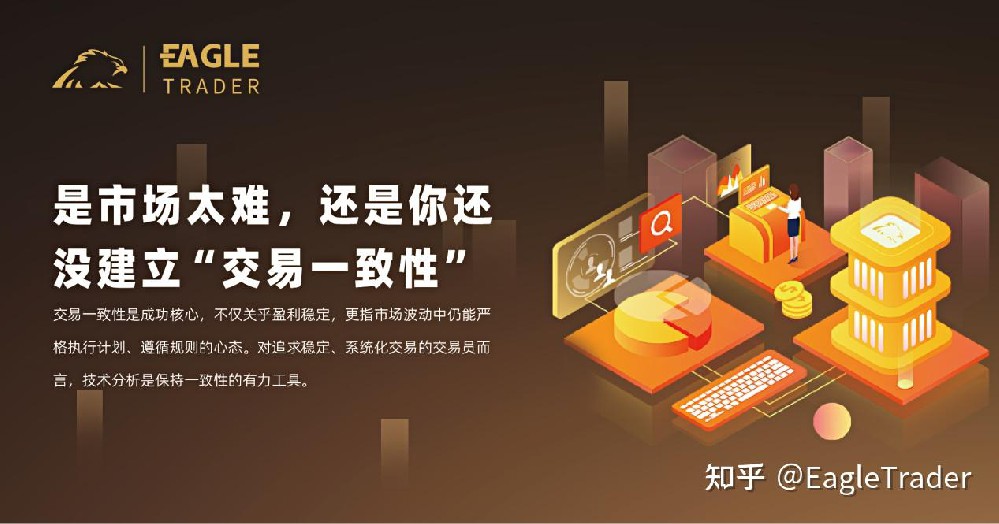Is the market too difficult, or have you not established “transaction consistency” yet?
- 2025年8月1日
- Posted by: Eagletrader
- Category: News
The consistency of transactions is one of the core of success. It is not only the stability of trading profits, but also a trading mentality that can still strictly implement plans and follow rules in the midst of market fluctuations.
For traders seeking stable and systematic trading, technical analysis is undoubtedly a powerful tool for maintaining consistency. Today, we will explore how to combine technical analysis with consistency to help traders improve trading performance on the EagleTrader exam and avoid the impact of emotional interference and market volatility.

What is trading consistency?
Trading consistency refers to the trader’s consistent execution of predetermined trading strategies and rules in different market environments, and is not disturbed by short-term fluctuations, market noise or emotions. It reflects a stable decision-making process and psychological self-discipline, allowing traders to operate rationally under any circumstances rather than responding to market fluctuations at will.
Why consistency is important?
Trading consistency is crucial for long-term profits because it helps traders stay calm and avoid emotional decision-making. By strictly enforcing established strategies and rules, traders can avoid impulsive trading and reduce errors caused by panic, greed, or market noise.
At the same time, consistency ensures effective risk management and avoids large losses caused by neglecting stop loss or excessive trading. Ultimately, this consistency helps traders achieve stable profits in a changing market environment and establish a sustainable trading model.
How technical analysis promotes transaction consistency
Technical analysis provides traders with an objective and regular trading framework. On the EagleTrader exam, traders can reduce uncertainty through the signals of technical analysis, helping them stay calm and rational in complex market environments, and ensure transaction consistency.
Clear trading signals
Technical analysis uses price charts, trend lines, technical indicators and other tools to help traders identify potential trends and turning points in the market. These signals provide traders with specific entry and exit points, reducing emotionally driven decisions. For example, through RSI and MACD indicators, traders can clearly know whether the market has entered an overbought or oversold state, thereby formulating corresponding trading plans.
Systemized Trading Strategy
EagleTrader provides a simulated funding account that allows traders to train their technical analysis capabilities in a risk-free environment and maintain consistency through systematic trading strategies. This means that in every transaction, traders can rely on the rules of technical analysis without relying on intuition or temporary market judgments, thus avoiding emotional trading.
Reduce interference from market noise
Market noise—that is, short-term, irrelevant price fluctuations—often cause traders to panic or impulse. On EagleTrader, technical analysis tools can help traders focus on important market signals, such as continuation or reversal of trends, ignoring irrelevant market noise, thereby maintaining a consistent trading pace.
How to achieve consistent risk management through technical analysis
Consistent risk management is another key factor in successful transactions. Through technical analysis, traders can better set reasonable stop loss and take-profit points, thereby protecting account funds and limiting potential losses.
Technical analysis basis for stop loss and take profit
Technical analysis provides traders with clear support and resistance levels, and these key levels can be used as references for stop loss and take profit. For example, in an uptrend, traders can choose to enter when they pull back to a support level, while stop loss can be set near lower key support levels to protect the account from large losses.
Maintain a reasonable risk-reward ratio
The trading environment provided by EagleTrader simulates the real market, and through simulated accounts and risk control mechanisms, it helps traders flexibly adjust and optimize their risk-reward ratio during the practice process, thus ensuring that every transaction is within a controllable range. Through technical analysis, traders can assess market risks and ensure that the profit potential of each transaction is greater than the risk of loss.
Although EagleTrader does not mandate traders to have transaction consistency in the assessment rules, we are well aware of its important role in long-term trading. Therefore, we have specially set up a consistency scoring mechanism in the “Account Analysis” tool to help traders understand more intuitively whether their trading behavior is continuity and regularity. We believe that traders who truly mature will often experience the value of consistency in practice – it is not only a reflection of systematic trading, but also the core foundation for achieving stable profits.
